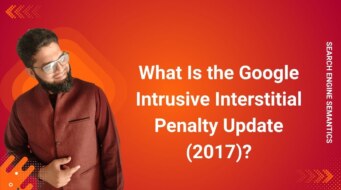What Is Image SEO?
Image SEO is the process of optimizing images to improve their performance in search engines like Google. This helps boost website traffic, page speed, and user experience by making images more discoverable and relevant. Image SEO involves optimizing filenames, alt text, image size, and using structured data to improve how search engines understand and index the images on your website.
Key Components of Image SEO:
Descriptive File Names:
The image filename should be clear and descriptive, incorporating relevant keywords. For example:
- Better: red-running-shoes.jpg
- Not Ideal: IMG12345.jpg
Descriptive filenames give search engines context about the image, which helps with ranking.
Alt Text (Alternative Text):
- Alt text provides a text-based description of the image, which is crucial for accessibility, especially for users with visual impairments.
- It also helps search engines understand the content of the image, which is important for image SEO.
- Best Practice: Write descriptive alt text that includes relevant keywords naturally, without keyword stuffing.
Captions for User Engagement:
- Captions appear near images and can enhance user engagement by providing additional context or information.
- While captions do not directly impact SEO, they can improve how users interact with your content, indirectly benefiting rankings.
Optimized Image File Sizes:
- Large images slow down page load speed, which negatively impacts SEO.
- Optimize images by using modern formats like WebP, which offer a smaller file size without sacrificing quality. Compress images to reduce their file size for faster load times.
- Page Speed is a ranking factor, so keeping image sizes under control is essential.
Responsive Images for Better Performance:
- Use responsive design techniques, such as the srcset attribute, to deliver appropriately sized images based on the user’s device (e.g., desktop, tablet, mobile).
- This improves loading times and user experience by ensuring users get the best image size for their screen.
Structured Data for Enhanced Search Results:
- Adding schema markup (structured data) to your images helps search engines display richer search results, such as rich snippets or Google Images.
- Structured data can provide captions, descriptions, and even prices in search results, increasing the visibility of your images.
Relevance to Page Content:
- Context matters—images should be relevant to the surrounding content. Search engines analyze both the image and the text to determine the image’s relevance to specific queries.
- Ensure that the images align with the page’s theme and support the overall content.
Why Image SEO Matters?
Optimizing your images plays a critical role in your overall SEO strategy. When done correctly, image SEO can:
1. Improve Search Engine Rankings:
Optimized images contribute to better visibility, especially in Google Images and other image-specific search results.
2. Enhance User Experience and Accessibility:
Proper image SEO ensures that your images are accessible to a wider audience, including users with disabilities, which improves user satisfaction.
3. Increase Website Traffic and Engagement:
Search engines rank optimized images better, and engaging visuals can encourage users to spend more time on your site, increasing overall traffic.
Checklist for Image SEO:
Use Descriptive, Keyword-Rich Filenames – Provide context with clear image filenames.
Write Relevant Alt Text – Describe the image for search engines and users.
Optimize Image Sizes – Compress without losing quality for faster page loads.
Ensure Image Responsiveness – Use srcset for better device compatibility.
Leverage Structured Data – Use schema markup for enhanced results.
Maintain Content Relevance – Keep images closely related to the page’s content.
You can improve your website’s visibility, speed, and engagement, ultimately contributing to a more successful SEO strategy, by following these best practices.
Final Thoughts on Image SEO:
Image SEO is an often-overlooked aspect of search engine optimization, but it can have a significant impact on both user experience and search rankings. You not only enhance accessibility but also improve how search engines understand and index your content, by ensuring that your images are well-optimized—through descriptive filenames, relevant alt text, and appropriate sizing.
Image SEO is about more than just aesthetics—it’s about making your visuals work harder for your site’s success. It’s an essential part of building a well-rounded SEO strategy, one that boosts both visibility and engagement.
Want to Go Deeper into SEO?
Explore more from my SEO knowledge base:
▪️ SEO & Content Marketing Hub — Learn how content builds authority and visibility
▪️ Search Engine Semantics Hub — A resource on entities, meaning, and search intent
▪️ Join My SEO Academy — Step-by-step guidance for beginners to advanced learners
Whether you’re learning, growing, or scaling, you’ll find everything you need to build real SEO skills.
Feeling stuck with your SEO strategy?
If you’re unclear on next steps, I’m offering a free one-on-one audit session to help and let’s get you moving forward.



